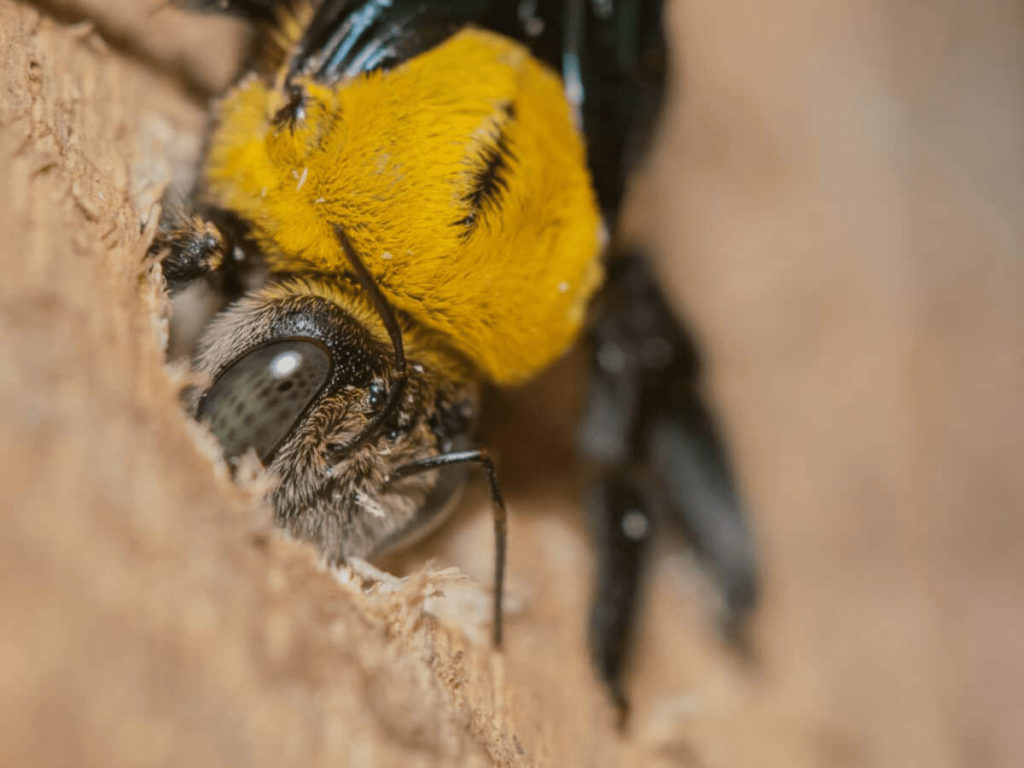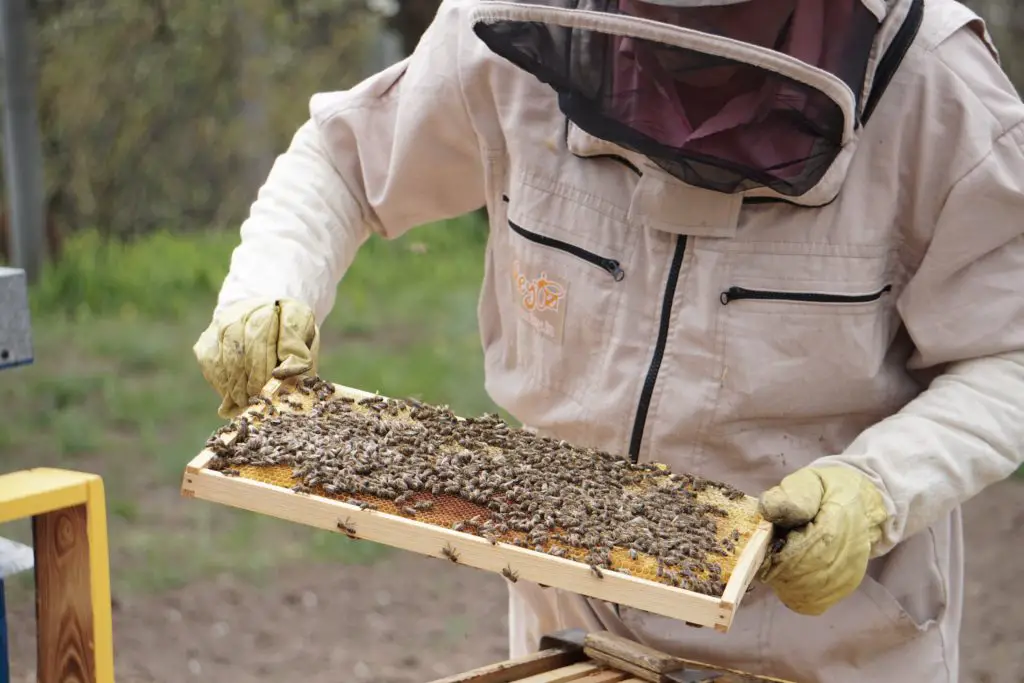Affiliate Disclaimer - As an Amazon Associate I earn from qualifying purchases.
It supports the website. So, Thank you
Bees are beneficial creatures and serve humans and the environment by pollinating plants. This is great but most of us would agree that there should be a separation between nature and our homes. In short, you don’t want bees nesting in the walls of your house!
One of the ways that a lot of people try to deal with nesting bees is to fill any holes with caulk. This might work as a temporary solution but isn’t going to fix the issue for good. This begs the question: can bees eat through caulk?
Bees are determined little creatures and caulk won’t be too difficult for them to bore through when the moment calls for it. Silicone caulk will be the most challenging for bees to eat through but they’ll keep going at it and will eventually succeed.
If you’re having issues with bees nesting in your home then all is not lost. While caulk may not be the answer, there are some other things you can do.
Table of Contents
Bee Problems
The most common type of bee that will nest in your home is the Carpenter bee. It gets its name because of the way it will bore holes in wooden structures. Normally, carpenter bees will work on weathered or weakened wood as it’s not as difficult to get through. This might include siding or exterior walls of your home.
The problem with this is that the bees can cause significant structural damage to the property since the holes go quite a way into the wood. This can result in moisture and rainwater getting in causing rot and eventually leading to irreparable damage. Not to mention it doesn’t look great!
If you notice any holes or cracks on your property then it is essential to act quickly and fill them in before any bees take notice. You can also fill holes that bees have already made in order to prevent further damage to the wood.
Are Bees Able To Chew Through Caulk?
Yes, in short, bees can chew through caulk but it isn’t like they’re nibbling away at it so quickly that you’re refilling holes every day of your life. The thing you need to keep in mind is that caulk can be made from a variety of different materials and it depends on which you use as to how easily the bees will be able to chew their way through.
One of the best types of caulk for preventing bees is silicone as this has a much more flexible and rubbery texture that is far more of a challenge for the bees to gnaw through. That said, if they’re determined enough, they could make their way through it over time so it’s far from impossible.
What Is Caulk And What Is It Used For?
Caulk, which is sometimes called caulking, is used for sealing seams and joints to prevent leaks. It is often used in pipework as well as in a number of other situations.
Caulk has been around for many years and the earliest type was made from fibrous materials which were used to pack into the wedge-shaped seams between the wooden boards of ships and boats. However, modern caulk is much more flexible and is used for a whole host of applications.
You’ll find it used for sealing gaps in buildings which prevents things like air, water, dust, and bugs from getting in.
There are several different types of caulk including silicone, vinyl latex, acrylic latex, PU, and acrylic tile sealant.
How Can You Stop Bees From Chewing Through Caulk?
It can be infuriating to have problems with bees or other insects and even though we’re 100% bee-friendly, we know that they belong in a hive and not your home! If you’re keen to stop bees from chewing through your newly caulked hole then you’ll need to be a little more innovative than simply filling it in.
Before you fill the hole entirely, be sure to pop a barrier inside. You can use a small screen, fiberglass, steel wool, insulation, or any other solid material. You place this barrier in the center of the hole between layers of caulk and this will make it far more difficult, if not impossible for the bees to get through.
If you do notice a nest then you could fill in the holes using the above method. This will stop new bees from entering and trap existing bees inside that will eventually die. Although, you should think carefully about this as the last thing you want is a wall full of rotting bees. Maybe it’s best to wait until the nest is empty to fill it in.
If you are going to fill in a carpenter bee hole then you are much better off using something like a wood dowel or CORKS as opposed to expanding foam or caulk. The idea behind this is that any larvae will hatch but still be able to move about. As they do this, they’ll move through drione dust which will kill them. When you use caulk or foam, they aren’t able to move about and will likely start boring a new hole.
Above all, if you are in any doubt or are concerned about a bee infestation then we would strongly recommend calling a professional pest controller who will be able to handle the issue for you. Remember, that while bees are not naturally aggressive, they may sting when provoked.
Conclusion
Nobody wants to share their home with bees. But once there is a visible hole in the house, bees will make use of this. Moreover, carpenter bees will bore holes into wooden parts of the home, especially those that are already damaged.
In order to avoid an infestation, you’ll need to seal the holes but using caulk isn’t always the best idea. Bees can eat through caulk with a bit of determination. If you are going to use it, it is recommended to create an internal barrier and only use silicone caulk as this is more difficult for the bees to get through.
In any case, where a bee infestation becomes a serious problem, it’s always a good idea to hire the assistance of a professional.




